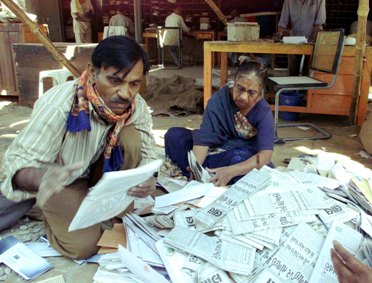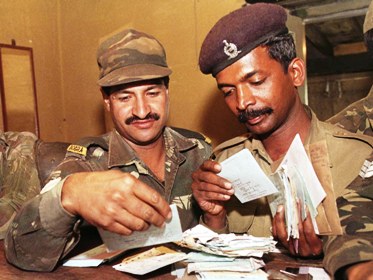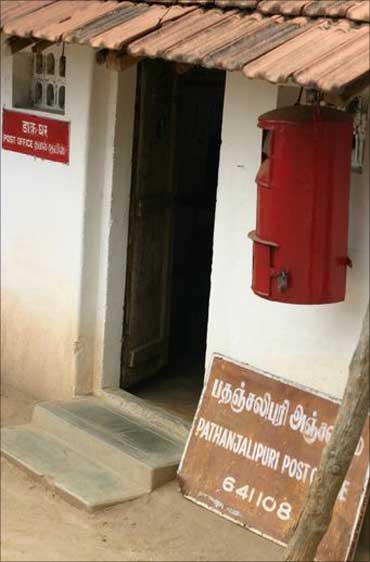 | « Back to article | Print this article |
India Post: The past, present and future
India Post, the world's largest postal network, is set to become a major partner in financial inclusion.
The Indian postal network is the largest in the world with 155,015 post offices in the country, 90 per cent of which, that is 139,144, are in the rural areas.
While just around a quarter of the villages in the country have post offices, all inhabited villages have access to postal facilities.
This is one communication service that has truly met the objective of inclusiveness, reaching out to every nook and corner of the country.
Click NEXT to read further. . .
India Post: The past, present and future
In addition to the regular Department Post Offices, there are Extra Departmental Post Offices and over 250,000 Gramin Dak Sevaks are working on a part-time basis.
The post office network, a central government service, has been fairly well spread out across all the states.
Each post office serves an area of approximately 21 sq km and an average of 7,000 people.
There are some regions like Jammu and Kashmir and the north east that rank at the top with low area coverage, though this is largely owing to the topography of these states with large areas sparsely or totally uninhabited.
Click NEXT to read further. . .
India Post: The past, present and future
Small states with good connectivity like Himachal Pradesh and Kerala do well when both area and population coverage are considered. India Post continues to expand services, and this year 200 branch post offices, mainly in rural areas, and 110 sub post offices are proposed to be set up.
India Post has been providing a range of services, going beyond parcel and mail delivery -- in fact, the Post Office Savings Bank, which had 206 million deposit accounts as on March 31, 2009, is the largest banking institution in the country.
The postal network has had to reinvent itself in the face of liberalisation, facing competition from private courier services in urban areas and other financial intermediaries.
Click NEXT to read further. . .
India Post: The past, present and future
Money orders, for instance, have declined over the past decade, though premium service segments like speed post, retail post and business post have seen good growth.
Recognising the need to upgrade and modernise even the 'look and feel' of post offices, the government has launched Project Arrow to attract customers back into the postal services.
Computerisation is also on, with the aim of covering all services in all post offices in the country by September 2012.
Click NEXT to read further. . .
India Post: The past, present and future
Moreover, the vast network is being put to use to disburse government payments now -- more than 95,000 post offices are involved in the disbursement of wages under the Mahatma Gandhi National Rural Employment Guarantee Scheme; every month around 800,000 new MGNREGS accounts are opened and so far till June 30, 44.8 million accounts have been opened under the scheme.
Then there is the sale of pension, insurance and investment schemes as well -- retail of the New Pension Scheme has begun in 20 of the 22 postal circles; and in partnership with UTI Mutual Fund, mutual fund schemes are being sold across the country in all post offices.
With a network that already reaches every household in the country, India Post is now set to become a major partner in meeting the objective of financial inclusion.
Indian States Development Scorecard is a weekly feature by Indicus Analytics that focuses on the progress in India and the states across various socio-economic parameters.





